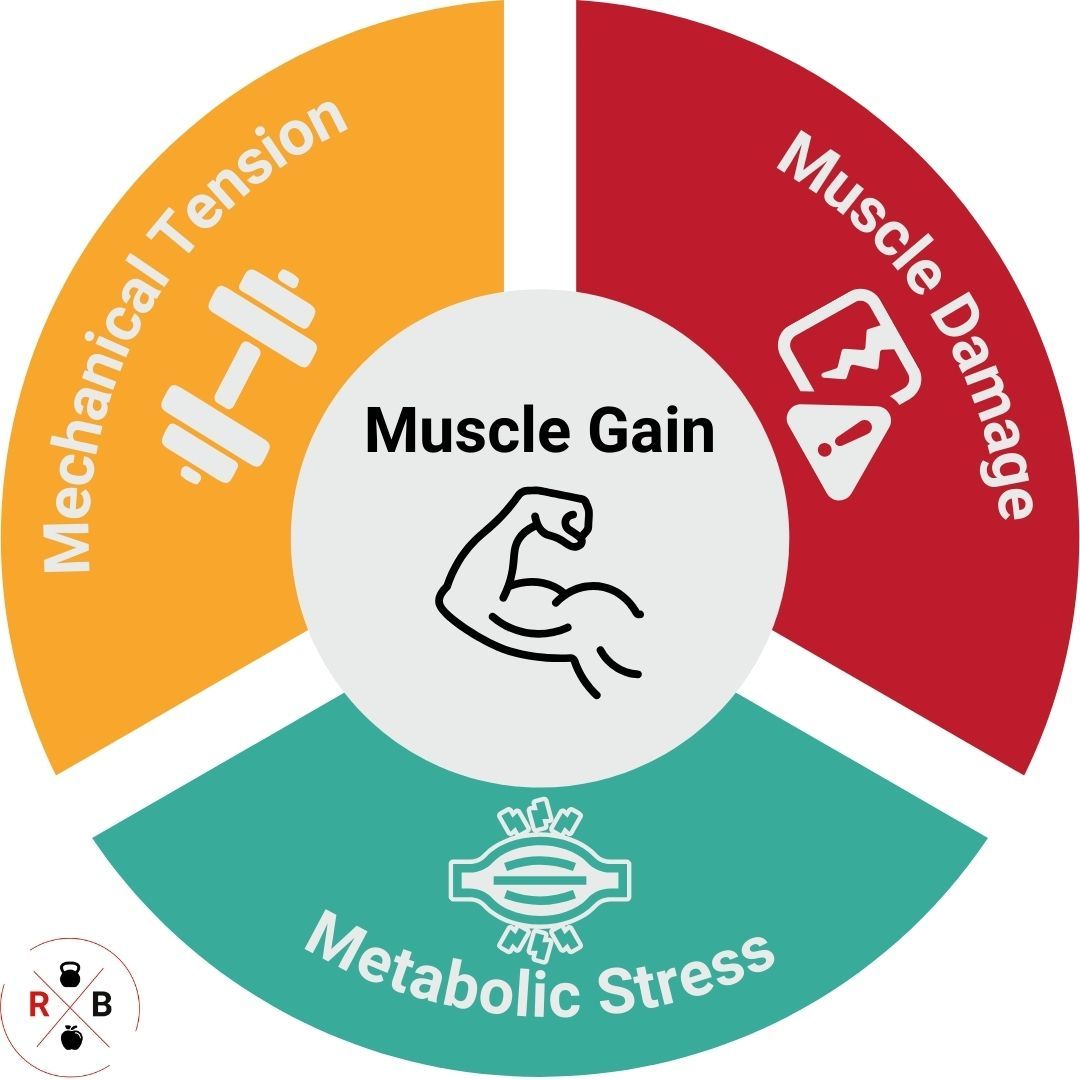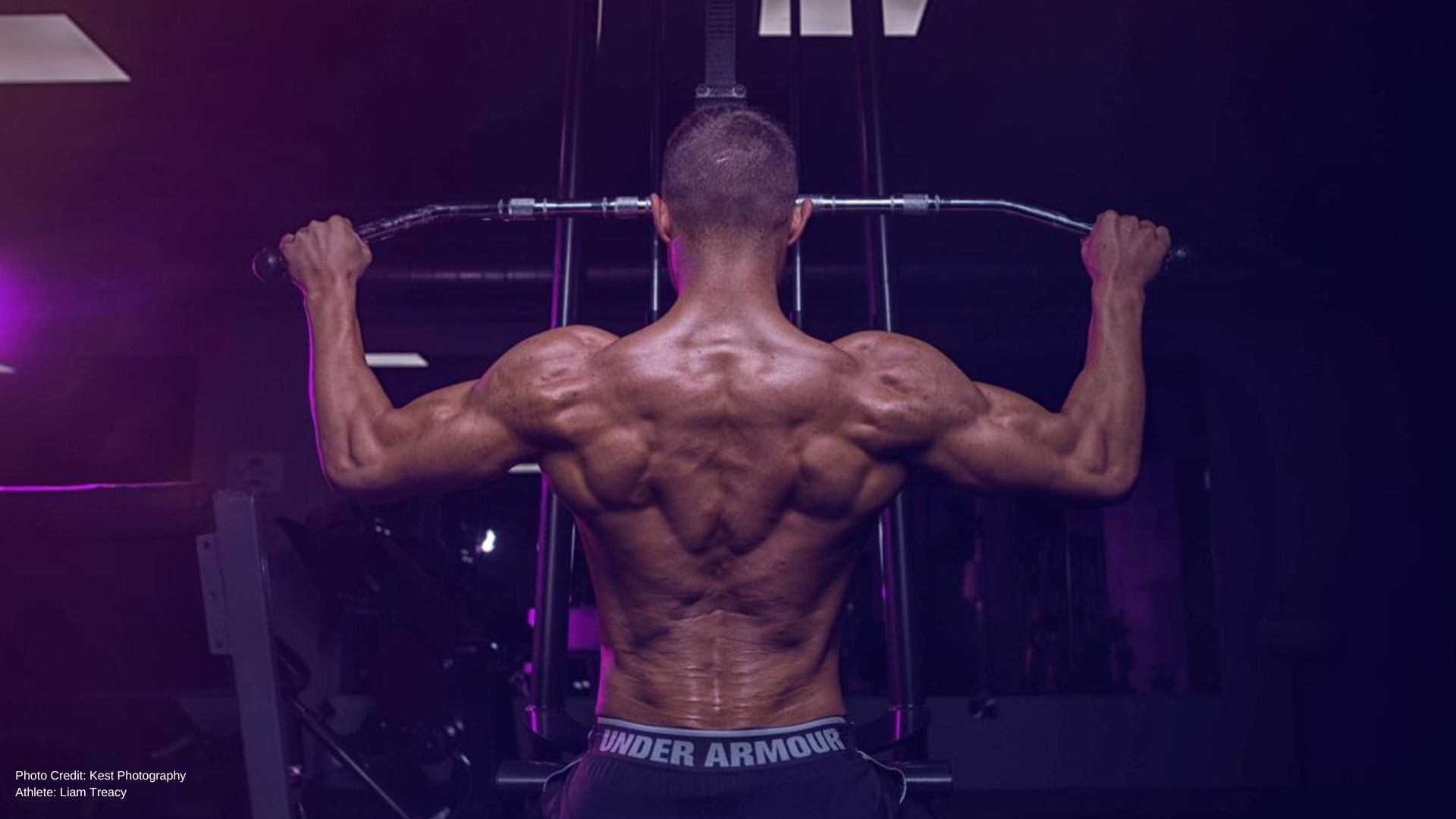You’re probably well aware that lifting weights is the best way to build muscle, but you probably don’t know what is actually happening under the hood when you lift weights to cause muscle to grow. Sure, it might seem as simple as going in and busting out a few sets of heavy squats and curls, but by knowing what are the exact mechanisms that cause muscle growth, you can start to understand what you’re actually doing with your training and how to take advantage of the various ways to trigger muscle growth so that you can optimise your training and enjoy it more.
There are three primary mechanisms of muscle growth:
- Mechanical tension
- Metabolic stress
- Muscle damage
Each plays an important role in building muscle, but some are more important than others. Also, there can be too much of a good thing, so knowing the limits of some of these mechanisms is important for constructing an optimal training program and getting the best results. Alright, let’s get into it!

Mechanical Tension
The mechanism that arguably plays the greatest role in muscle growth is mechanical tension. When a load is placed on the muscles, such as when lifting weights, it creates tension in the muscles. This tension is sensed by mechanosensors, which convert the signal to chemical messages. These chemical messages then turn on anabolic pathways in the body that result in muscle growth.
The degree of mechanical tension on the muscle is determined by the magnitude and duration of the load. The larger the load and the longer it acts on the muscle, the greater the mechanical tension. You might be thinking that if heavier loads create more tension, then lifting the heaviest loads possible would cause the greatest amount of muscle growth! However, it has been shown that very high loads (85%+ of 1-repetition max. (1RM)) cause less muscle growth than moderate loads (60-85% 1RM). One of the reasons for this is that very heavy loads don’t allow you to create mechanical tension for long durations, whereas moderate loads provide a high amount of mechanical tension for long durations, which creates more total mechanical tension.
Metabolic Stress
Another important mechanism for muscle growth is metabolic stress. When muscles perform work, metabolites are created as a byproduct of energy production. These metabolites must be cleared from the muscle for it to function correctly, however, these metabolites can be produced at a rate that is higher than the rate at which the body can clear it, which results in the accumulation of metabolites in the muscle cells. Exercise that is relatively high in intensity (50-85% 1RM) and relatively long in duration (15-120 seconds), such as lifting weights in the 5-20 rep range, results in the greatest accumulation of metabolites. The accumulation of these metabolites creates stress on the muscles and can result in certain factors occurring that lead to muscle growth, including:
- Increased muscle fiber recruitment
- Myokine production alterations
- Cell swelling
- Accumulation of reactive oxygen species (ROS)
- Elevated hormone production (growth hormone and testosterone)
Significant muscle growth has even been shown to occur in very low-load conditions that result in a very high amount of metabolic stress. Blood flow restriction training is a form of training where blood flow is restricted to the working muscles by tying rubber tubing, a band or pressure cuffs around the limb. This reduces the amount of oxygen that can be delivered to the muscle as it is working, which results in significant metabolite buildup despite lifting very low loads (less than 40% 1RM). Creating large amounts of metabolic stress is a very useful tool for muscle growth when you want to avoid using heavy loads, such as when dealing with injuries.
Muscle Damage
Lifting heavy weights and training at high intensities, especially with exercises that the body isn’t accustomed to, typically causes damage by creating tears in the muscle. We don’t know for sure if muscle damage helps with muscle growth or if it’s just a consequence of training, however, it’s speculated that this damage could play a part in triggering muscle growth via:
- Inflammation
- Satellite cell activation
- Increased insulin-like growth factor 1 (IGF-1) production
- Cell swelling
One thing that is for sure is that too much muscle damage can impair muscle growth as it exceeds the body’s recovery capabilities, which limits the intensity or frequency of training, which results in less net total muscle growth. Therefore, it’s important to know what your body can recover from so that you maximise your training intensity and frequency. This is something that a coach can help you greatly with by planning your training to suit your recovery ability, monitoring how your body responds to that training, and then adjusting your program to find the ‘sweet spot’ to maximise muscle growth.
Putting It All Together
The goal of a good training program to maximise muscle growth is to leverage the mechanisms that result in muscle growth. You want a program that is going to create sufficient mechanical tension and metabolic stress and limit muscle damage. Leveraging all three mechanisms of muscle growth will help you turn on all the various pathways and factors that cause muscle growth and ensure that you are not leaving any stone unturned. Our Muscle & Strength Gain programs are designed to incorporate all three mechanisms of muscle growth to get you the best results possible from your training.
Maximise Your Results With a Program Designed By Our Expert Trainers
Building and toning muscle isn’t just about training hard – it’s also about training smart. Don’t waste time spinning your wheels with a program that doesn’t suit your body's individual response or fit your goals, schedule, and preferences. Our training programs are designed with the perfect blend of science and practicality so that they suit your body's individual response and get you the best results possible. Find the best program for you right now!









